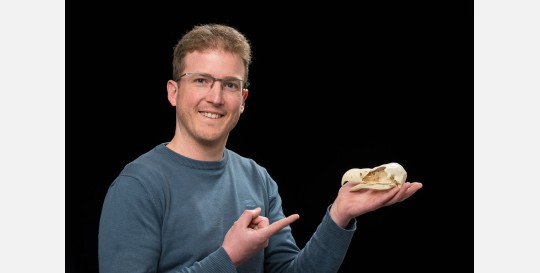Quentin Goffette
Archaeozoologist
Quaternary Environments & Humans
Earth and History of life

Quentin Goffette is an archaeozoologist who studies animal remains from various periods, uncovered in Wallonia through preventive archaeology. His research focuses on reconstructing ancient environmental conditions and human–animal relationships to better understand the role of animals within earlier societies (e.g., diet, craftsmanship, etc.). He has a particular interest in birds, especially in how they were exploited by both modern humans and Neanderthals.
Function
Quentin Goffette works as an archaeozoologist at the Royal Belgian Institute of Natural Sciences (RBINS), where he studies faunal remains from archaeological sites in Wallonia. In addition, he has developed a research focus on the exploitation of birds by humans during Prehistory.
Research team: Quaternary Environments & Humans
Research theme: Past interactions between Humans and Nature
Current Project(s)
Partnership AWaP - RBINS
Area of Expertise
Quentin specializes in the anatomical and morphometric identification of animal remains, primarily mammals, birds, mollusks, and herpetofauna from the Western Palaearctic. He is also trained in taphonomic analysis, with particular expertise in interpreting traces left by human activities, as well as in leading archaeological experiments.
Dissemination activities
Did your ancestors fancy birds for dinner?
Professional Experience
After completing a Master's in Art History and Archaeology at the Université Libre de Bruxelles (ULB), Quentin joined the 'Quaternary Environments & Humans' at the Royal Belgian Institute of Natural Sciences (Brussels) in 2009. As an archaeozoologist, he contributed to the study of animal remains from excavations in Sagalassos (Turkey), the Brussels-Capital Region, and since 2011, Wallonia. he also completed a PhD at the University of Liège, focusing on the exploitation of birds by prehistoric hunter-gatherers. His PhD involved analyzing bird remains from Paleolithic sites, identifying species, and conducting experimental archaeology to gain a better understanding of bird exploitation.
Publication highlights
Change in Historical Range of the Ural Owl in Europe

